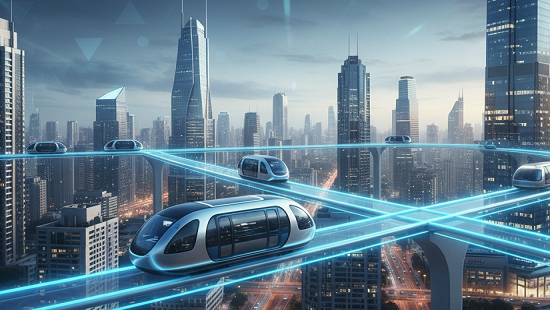
Mumbai’s Business Hubs to Get Futuristic Pod Taxis for Smoother Travel
Mumbai is preparing to embrace a futuristic transport upgrade with the planned introduction of pod taxis, also known as Personal Rapid Transit (PRT) systems. The initiative, announced by Maharashtra Deputy Chief Minister Devendra Fadnavis, is being positioned as a game-changer for last-mile connectivity, particularly in the city’s busiest commercial zone, the Bandra-Kurla Complex (BKC).
Tackling Mumbai’s Traffic Puzzle
For decades, Mumbai has struggled with one of the toughest traffic bottlenecks in India. Despite metro expansions, suburban railways, and road-widening projects, the rapid pace of urbanisation continues to overwhelm existing infrastructure. Office-goers working in BKC and nearby areas often spend precious hours navigating short distances due to clogged roads and high vehicle density.
Officials believe that pod taxis will help bridge this last-mile gap, allowing commuters to travel quickly between metro stations, railway hubs, and commercial towers. “As Mumbai’s business districts expand, innovative transport solutions like pod taxis are no longer optional—they are essential,” said Fadnavis during a review meeting of the project at Sahyadri Guest House.
Why BKC First?
The Bandra-Kurla Complex has become a central node in Mumbai’s urban map. With corporate offices, financial institutions, consulates, and government facilities concentrated here, the area already sees lakhs of daily visitors. The upcoming bullet train terminal and the new Mumbai High Court building are expected to add another layer of heavy footfall in the years ahead.
Authorities are therefore prioritising BKC for the pilot phase of pod taxis. Fadnavis also indicated that the redevelopment of Kurla and Bandra stations will align with this plan, ensuring seamless integration between pod taxi stations and traditional transit hubs.
What Makes Pod Taxis Different?
Pod taxis have been described globally as one of the most advanced, eco-friendly, and efficient urban transport models. Unlike conventional buses or cabs, pod taxis:
- Run on elevated tracks 5–10 metres above ground, avoiding road traffic altogether.
- Operate autonomously, without drivers, using advanced navigation and safety systems.
- Resemble compact electric cars, typically carrying 8 seated and 13 standing passengers.
- Function like on-demand cabs—users can board at specific stations and travel directly to their destinations without intermediate halts.
Systems similar to this have been successfully implemented in parts of Europe, the Middle East, and Asia, with strong feedback on speed and convenience.
A Step Towards Integrated Transport
In line with Mumbai’s broader push towards smart mobility, pod taxis will also be part of the single-card system currently being developed. This means that commuters will be able to use one digital card across metros, buses, suburban rail, and the pod taxi network.
Such integration could redefine the way citizens plan their daily journeys, making travel faster, smoother, and more cost-efficient. For office-goers in BKC, this is expected to drastically cut down travel fatigue while improving productivity.
Urban Redevelopment on the Horizon
The state government has also signaled that pod taxi projects will go hand-in-hand with the redevelopment of Bandra and Kurla station areas. The aim is to create an ecosystem where modern mobility meets upgraded infrastructure, turning these localities into transit-oriented hubs.
Fadnavis stressed the need to connect pod taxi stations directly to commercial buildings in BKC. This approach mirrors global best practices, where elevated walkways and automated pods allow office-goers to move from their workplace directly to transit nodes without stepping onto congested roads.
Economic and Environmental Benefits
Beyond convenience, pod taxis are being projected as a sustainable transport alternative. Since they operate on electric systems, they help reduce air pollution and carbon emissions. The elevated design also means minimal land acquisition, which is often a roadblock for large-scale urban projects in Mumbai.
Economists suggest that faster, predictable mobility in Mumbai’s business districts could have a positive ripple effect on the economy by saving time, improving accessibility, and encouraging more investment in the city’s commercial zones.
Looking Ahead
While timelines for implementation have not been finalized, officials indicate that groundwork will begin alongside station redevelopment projects. Once operational, Mumbai could become one of the first major Indian cities to deploy pod taxis at scale.
The move underscores Mumbai’s ambition to balance heritage with innovation—preserving its iconic suburban rail while embracing futuristic solutions. If successful, the pod taxi project could eventually expand beyond BKC into other crowded pockets of the city, offering a model for urban transport across India.





